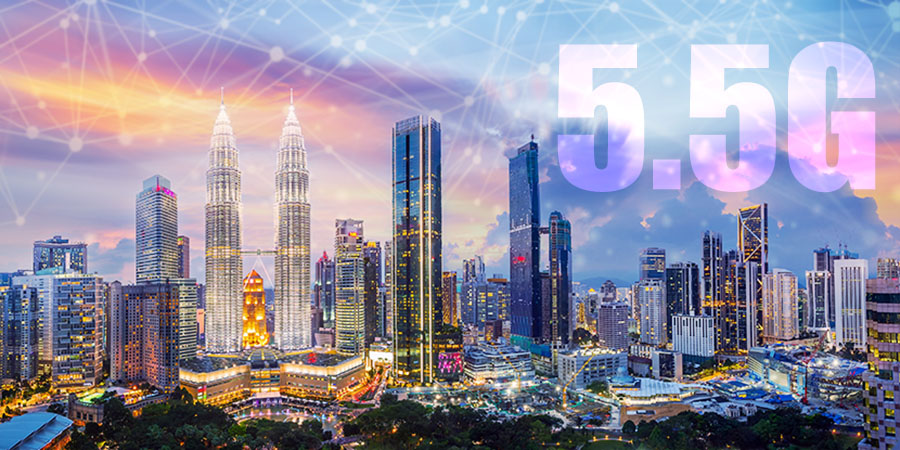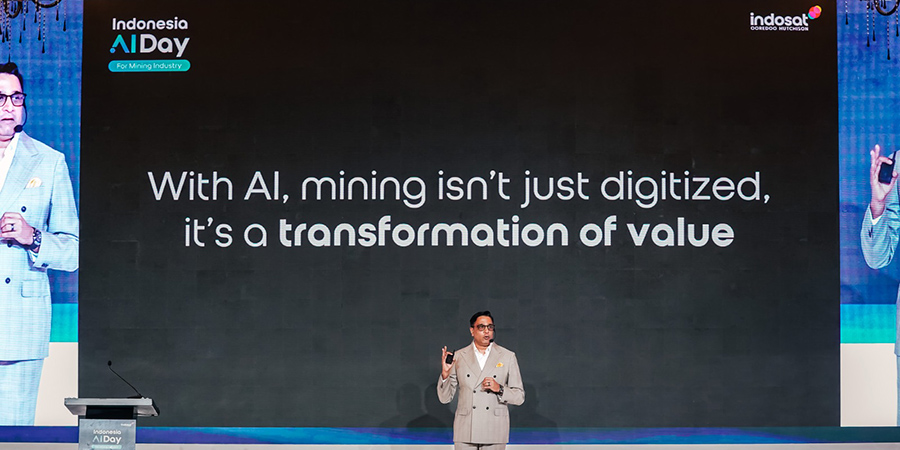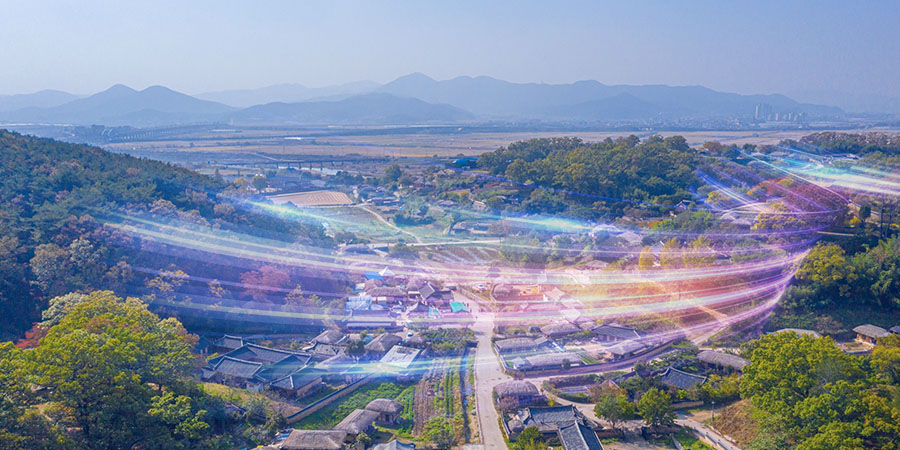Malaysia’s 5G journey officially began with a bold push from the government and industry stakeholders to establish a robust and high-speed 5G infrastructure.
Digital Nasional Berhad (DNB), the government-backed entity tasked with rolling out the 5G network in Malaysia, has been at the forefront of this initiative. The Malaysian government entrusted DNB with the responsibility of rolling out the infrastructure through a shared network model, aiming to foster equitable 5G access nationwide.
By the end of 2022, DNB had deployed 3,900 5G sites, achieving nearly 50% coverage of the population in major urban areas. This ambitious rollout aimed to cover 80% of populated areas by 2024. Despite ongoing debates regarding DNB’s governance and transparency, it remains at the forefront of Malaysia’s efforts to transform its telecommunications infrastructure. The rollout of 5G services has sparked collaboration with major telecom players, including CelcomDigi, which became a key equity holder.
As the technology evolves, it’s clear that 5G is not a one-stop destination but a steppingstone toward even more advanced networks. 5.5G—a bridging technology between 5G and 6G—is set to enhance user experience across Malaysia.
Latest: Malaysia’s Blueprint for AI Dominance in ASEAN
The Road to 5.5G Across Malaysia
In 2023, Digital Nasional Berhad (DNB), Telekom Malaysia (TM), and ZTE collaborated to create a pivotal launchpad for the development of 5.5G, conducting the world’s fastest 28 Gbps 5G mmWave live trial. This achievement also marked the deployment of Malaysia’s first 5G standalone (5G SA) core, laying the foundation for 5.5G advancement in Malaysia.
In 2024, ZTE continued to push the boundaries of 5G innovation by showcasing its latest developments at the ‘Unfolding the Intelligent Future 2024’ event in Kuala Lumpur. During the event, the company set the fastest 5.5G live trial record. The 5.5G setup leveraged ZTE’s mmWave Active Antenna Unit (AAU), reinforcing Malaysia’s position as a leader in next-generation telecommunications.
One of the first significant milestones for 5.5G in Malaysia came in the form of a successful trial by Maxis and Huawei, showcasing the potential of 5.5G technology in the Southeast Asian market. This trial, conducted in late 2024, was not only Malaysia’s first 5.5G demonstration but also the first in the region. The collaboration between Maxis and Huawei aimed to demonstrate how 5.5G can significantly enhance user experience by delivering faster data speeds, lower latency, and more reliable connections.
During the trial, the teams successfully showcased a wide range of potential 5.5G use cases, including ultra-high-definition (UHD) video streaming, augmented reality (AR) and virtual reality (VR) applications, as well as immersive 3D content. These technologies, which rely on massive data throughput and low latency, are expected to benefit greatly from the enhanced capabilities of 5.5G networks, providing a glimpse into the future of entertainment, education, and virtual communication in Malaysia.
The trial further demonstrated that 5.5G could enhance existing 5G infrastructure, enabling more efficient spectrum usage and supporting higher numbers of connected devices, a key requirement as the number of Internet of Things (IoT) devices continues to grow exponentially.
Looking ahead to 2025, Malaysia’s 5.5G landscape is set to evolve further with Ericsson’s launch of 5G-Advanced in the country, following its successful deployment in Singapore. As one of the leading providers of 5G and 5.5G technologies, Ericsson’s contribution has been instrumental in helping Malaysia achieve its goal of becoming a regional leader in digital transformation.
Related: Maxis, China Mobile International Announce Partnership to Accelerate 5G in Malaysia
5.5G to Enhance User Experience
DNB’s ongoing efforts to roll out 5G infrastructure have provided a solid foundation for 5.5G development, enabling smoother transitions to next-generation technologies. The agency is also working on enhancing the capabilities of the existing 5G infrastructure by integrating 5.5G enhancements, such as ultra-reliable low-latency communications (URLLC), network slicing, and massive machine-type communications (mMTC). These features will improve the user experience by reducing network congestion, increasing reliability, and enabling the seamless connection of a wide range of devices.
5.5G networks are set to bring several advancements over the current 5G technology, offering faster speeds, lower latency, and improved capacity. With speeds up to 100 times faster than 5G, 5.5G will enable ultra-high-definition video streaming, immersive gaming, and data-heavy applications like 3D holograms and AR/VR. Latency will be reduced to just 1 ms, which is essential for real-time data processing and enhanced user experience. Smart cities will also benefit from real-time traffic management and AI-powered surveillance (supported by 5.5G technology), improving user experience across multiple facets of daily life.
5G Read: Digital Nasional Berhad, CyberSecurity Malaysia Join Forces to Safeguard 5G Networks
Progress and Ongoing Initiatives
While 5.5G is still in its nascent stages, several initiatives are already underway in Malaysia to lay the groundwork for its widespread adoption. Building on their partnership, Maxis and Huawei established a 5G-Advanced Joint Innovation Center in mid-2024. This center focuses on exploring innovations in gigabit capacity to support mobile network expansions and 5G/5.5G technologies.
Industry regulators and stakeholders in Malaysia are already discussing the implementation of key 5.5G features such as ultra-low latency and enhanced mobile broadband (eMBB). These discussions are crucial for ensuring that Malaysia’s 5.5G network is optimized for the diverse needs of both businesses and consumers.
The future of 5.5G in Malaysia looks promising. The Malaysian government and telecommunications industry stakeholders have set ambitious goals to make the country a leader in digital transformation, and 5.5G will play a key role in achieving these objectives. Additionally, the integration of 5.5G will be pivotal in Malaysia’s ongoing efforts to foster a digital economy. As industries increasingly adopt digital solutions, the enhanced speed, capacity, and reliability offered by 5.5G networks will be critical in supporting Malaysia’s growing tech ecosystem.
The future of mobile connectivity is bright, and Malaysia is poised to lead the charge. As 5.5G collaboration between global technology providers continues to evolve, consumers, businesses, and industries can look forward to enhanced multifaceted experiences.
Learn More About 5.5G:
2023, Marking the Start of 5.5G Deployment
5.5G Era: Exploring Future Innovations and Connectivity Trends







